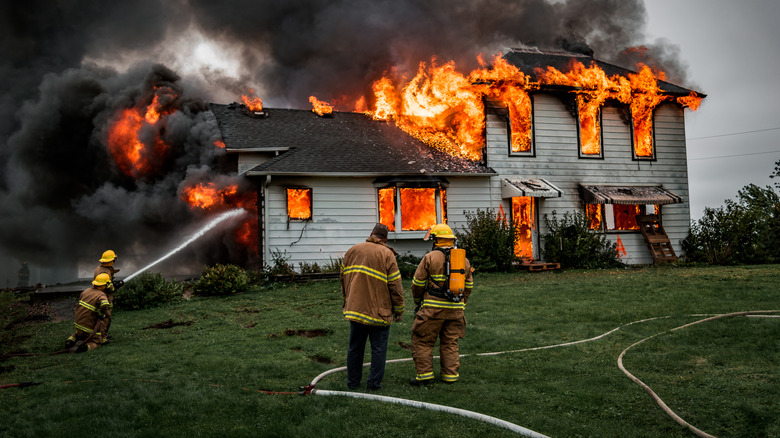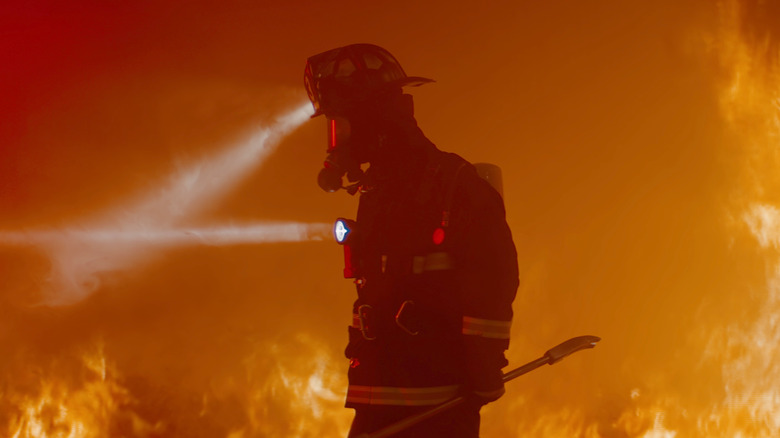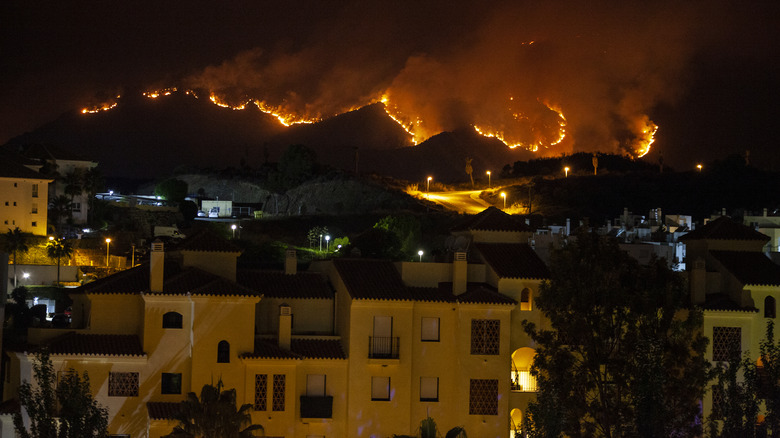What Really Happens To Your Body When You Burn To Death
Burning to death has to be one of the most gruesome ways to die imaginable. If you've ever made the mistake of absent-mindedly touching a hot surface, you realize quickly how intense and lingering the pain from a burn can be. Now imagine that pain lasting not for a fraction of a second but for minutes — until it kills you. Indeed, there's a reason authorities have punished criminals (such as Joan of Arc) by burning them at the stake: the intensely painful and prolonged death of the victim would make others think twice about doing whatever the condemned did.
Of course, there are more ways to die from fire than just burning at the stake. As the San Francisco Fire Department notes, an average of about 4,000 Americans per year die in house fires, and another 2,000 are injured. And as it turns out, the mechanism that kills you when you're burned to death may not necessarily be what you think it is.
If you're lucky, you'll die of carbon monoxide poisoning rather quickly
Whenever something burns, the reaction produces a number of chemical byproducts, one of which is carbon monoxide, according to Cheshire Fire & Rescue Service. The odorless, colorless gas is fatal, and in a fire, the concentrations may be high enough to kill you more or less instantly. That's actually a good thing because dying before the flames begin to exact their vengeance on your body (more on that later) is going to be preferable to the alternative.
Indeed, back in the days when people were burned at the stake, the condemned often died of carbon monoxide poisoning before the torturous flames began to lap at their skin. This was particularly true in mass executions when several people were burned at once. In a more modern context, carbon monoxide poisoning is actually a greater threat to the life and health of building occupants and firefighters than the flames themselves, per a study in Prehospital Emergency Care.
There are other ways to die from fire, too
Besides death from carbon monoxide poisoning or from the flames themselves, there are a couple of other ways a victim can die from a fire. For example, in addition to the ever-present danger of carbon monoxide poisoning, other household products can release additional chemicals when they burn. According to the Cleveland Clinic, these chemicals can kill you via inhalation or from simple suffocation. "When you inhale smoke from a fire, you're really inhaling a combination of a bunch of toxic products," says Dr. Baruch Fertel, an emergency physician.
Failing that, there's always plain-and-simple heatstroke. Once the temperature in the room you're in exceeds 105 degrees F, organ failure is a real possibility, Science Care reports. And when all else fails, there's simple shock. According to Physiopedia, the pain from a fire may be so intense that the victim's blood pressure suddenly drops due to shock, leading to organ failure and death.


